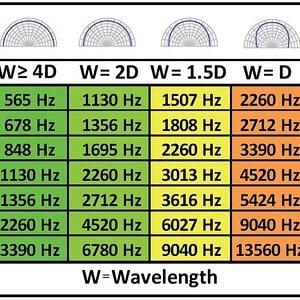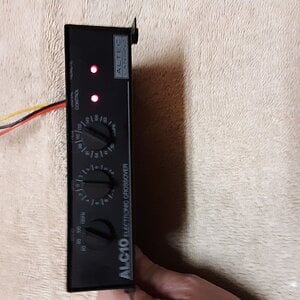You are using an out of date browser. It may not display this or other websites correctly.
You should upgrade or use an alternative browser.
You should upgrade or use an alternative browser.
Firewalker
CarAudio.com VIP
- Thread Starter
- #18
How? there's only one gain for the front left and right, and one gain for the rear left and right, so how can it be set for each left and each right?You set each channel individually using the corresponding right & left terminals for said channel. Channel 1 is for left usually Channel 2 for right Channel 3 for left and Channel 4 for right.
Firewalker
CarAudio.com VIP
- Thread Starter
- #20
Wouldn’t it be 70 watts x4 for each gain? For 16.7332 volts each?For that then you do it the same way only with the two gain settings instead and yes you can then use just the right or left for it with the DMM. Or you can put the DMM on the two terminals that would be used if you were to bridge it. I just swapped out 4 channels in my vehicle and put the DMM on the bridge terminals then double checked that the voltage was the same on the right & left and they were. Same principle set the head unit volume at 75% then with the correct test tone, with the test tone playing you slowing turn the gains up and find the right voltage for your wattage when it hits that voltage then stop turning the gain up. So voltage should be around 23.6 or so for each gain at 4 ohms. You take 70 watts x2 and 4 ohms which equals 23.6 via the ohms calculator below. Disconnect the rca's from the subwoofer amp when doing it. You can download a tone generator for your phone and run the test tone via bluetooth. Set my gains via DMM all the time when doing it that way and it works.

Ohm's Law Calculators and Formulas
www.the12volt.com
1aespinoza 10+ year member
Junior Member
Yes.Wouldn’t it be 70 watts x4 for each gain? For 16.7332 volts each?
Firewalker
CarAudio.com VIP
Jimi77 5,000+ posts
CarAudio.com VIP
Some people like the sound of clipping, it sounds "hotter" and compresses the dynamic range. Sound engineers will actually record clipped signals into the music now-a-days and have been compressing dynamic range for decades. Just be aware clipping can kill amps and speakers. Setting the gain to 2v with a 5v source would give you ~4db of clipping during musical peaks. Just make sure the amp has plenty of airspace to avoid overheating and don't listen for too long at max volumes. Hopefully the speakers are overrated (compared to the amp) so they can survive the additional power a clipped signal induces.That makes no sense, I set both at 5v, and I have to really crank up the volume to get it to a decent listening level, sounds better around 1 or 2v to me
- Thread Starter
- #24
That doesn’t matter. You don’t multiply the rms x the number of speakers on each gain. The formula calls for the rms x the ohms of the speakers, which in my case is 4 ohms. You take the square root of that which is 70 x 4 ohms = 16.7332v for each gain regardless whether you have 2 speakers or 4. There are 2 speakers on each, one gain for the front two and one for the rear two speakers.4 channel amp gain setting
See you total the amount of wattage on each gain. Was always taught this way going back and been doing it this way forever. Each gain controls 2 speakers not 4.
Last edited:
- Thread Starter
- #25
I never listen at anywhere near even half way up on the volume. Maybe 25% at the most. Either way, I’m setting the gains with a multimeter when I get home this evening, so it will be close to accurate since I don’t have an o scope. Then when I get the right voltage, to be safe I’ll back the gains off slightly below what the multimeter reads.Some people like the sound of clipping, it sounds "hotter" and compresses the dynamic range. Sound engineers will actually record clipped signals into the music now-a-days and have been compressing dynamic range for decades. Just be aware clipping can kill amps and speakers. Setting the gain to 2v with a 5v source would give you ~4db of clipping during musical peaks. Just make sure the amp has plenty of airspace to avoid overheating and don't listen for too long at max volumes. Hopefully the speakers are overrated (compared to the amp) so they can survive the additional power a clipped signal induces.
Firewalker
CarAudio.com VIP
Jimi77 5,000+ posts
CarAudio.com VIP
So you were just more concerned that to get to full volume you had to crank the volume control close to full volume? You said it "sounds better" with the gain set at 1-2v, which implies that it sounds better clipping since at any unclipped volume level the system should sound the same regardless of where the volume control or gain control is.I never listen at anywhere near even half way up on the volume. Maybe 25% at the most. Either way, I’m setting the gains with a multimeter when I get home this evening, so it will be close to accurate since I don’t have an o scope. Then when I get the right voltage, to be safe I’ll back the gains off slightly below what the multimeter reads.
- Thread Starter
- #28
No. I never listen that loud. My volume goes to 40, and I never have it turned up past 12. When I used the head units built in amp and had the volume set to 12 the sound was louder than what it was with the Sony amp and the volume set at 12 when I had the Sony gain controls both set to 5v. When I turned the Sony gain control closer to 2v with the volume on the head unit set to 12 it sounded the same, just as loud as when I had been using the head units built in ampSo you were just more concerned that to get to full volume you had to crank the volume control close to full volume? You said it "sounds better" with the gain set at 1-2v, which implies that it sounds better clipping since at any unclipped volume level the system should sound the same regardless of where the volume control or gain control is.
Jimi77 5,000+ posts
CarAudio.com VIP
Generally we set gain to match preamp voltage to avoid clipping and reject noise. Sounds like you're more concerned about the volume/gain structure, which is fine. Just be aware at what volume you start clipping and avoid going over that volume.No. I never listen that loud. My volume goes to 40, and I never have it turned up past 12. When I used the head units built in amp and had the volume set to 12 the sound was louder than what it was with the Sony amp and the volume set at 12 when I had the Sony gain controls both set to 5v. When I turned the Sony gain control closer to 2v with the volume on the head unit set to 12 it sounded the same, just as loud as when I had been using the head units built in amp
- Thread Starter
- #30
I understand that, but I’m still going to check it with a multimeter, and for example if The meter says the proper volts isa different setting when I adjust the gain that way, and it’s not what the pre out of the head unit is, then which should I go with? The head unit preout is 5v, and on the Sony amp it goes from 6v to 0.2 which is stamped on the amp around the gain controls.Generally we set gain to match preamp voltage to avoid clipping and reject noise. Sounds like you're more concerned about the volume/gain structure, which is fine. Just be aware at what volume you start clipping and avoid going over that volume.
Last edited:
Activity
No one is currently typing a reply...
Similar threads
- 3
- 717
set your gain right, heres how. test tones are at the very bottom...
- Started by Jeremysmith122703
- General Car Audio
- 6
- 1K
You will need a multi-meter, a set of RCAs that will be sacrificed, and a small blade screwdriver.
First disconnect the amp from the LC2i. Now cut...
- Started by Nickslur
- Amplifiers
- 1
- 1K
Thanks for the info, made the setting changes and that did the trick. Toyed with the amp gain to get the amplitude balanced out, then tweaked...
- Started by asforme
- Amplifiers
- 4
- 2K
How do you accurately set subsonic? Isn't the knob labeled in the vaguest of ways, a high and low value?
Do you play a tone at desired frequency...
- Started by GoT_2B_BuMpN
- Amplifiers
- 6
- 1K


